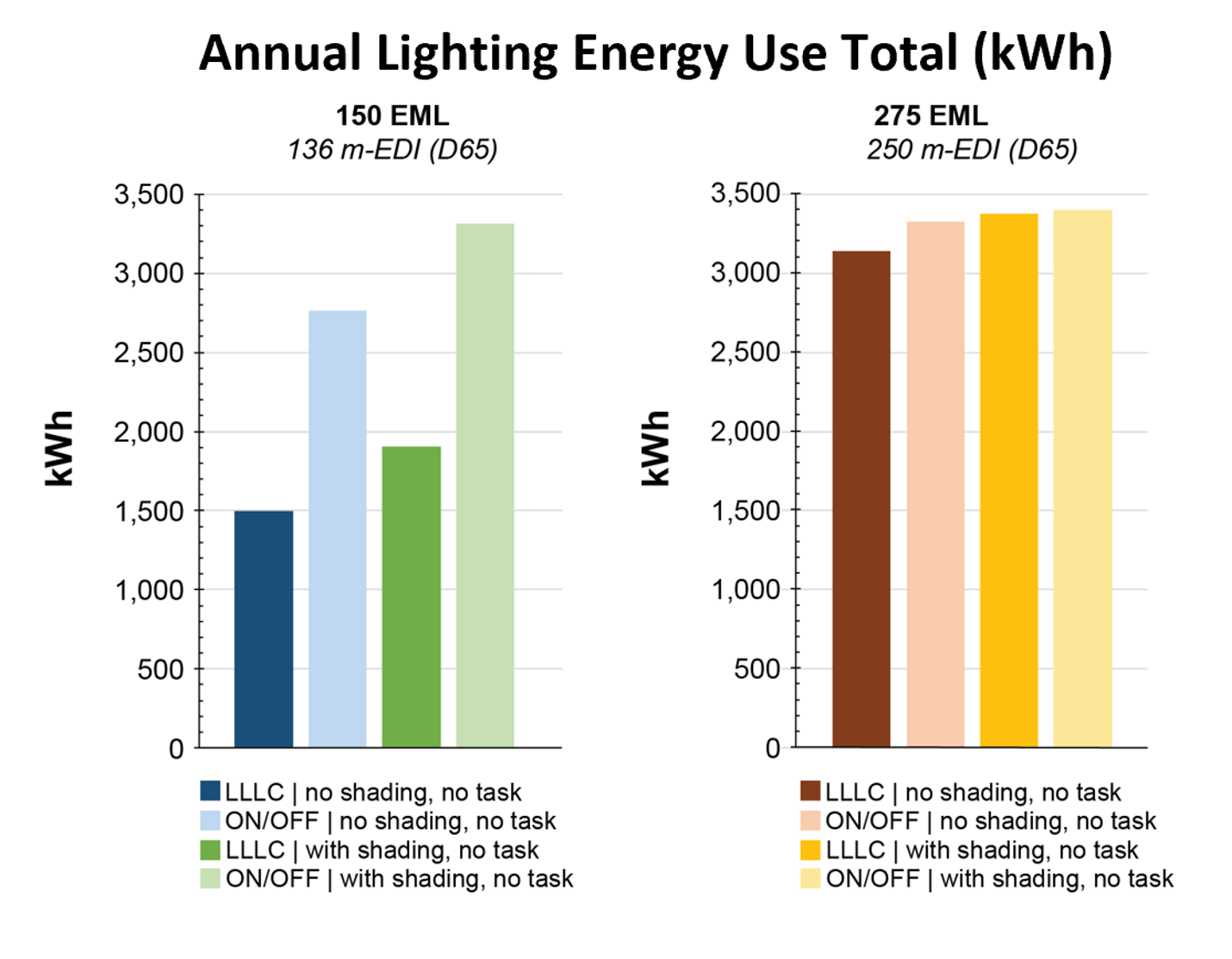Each quarter, we’ll deliver updates and highlights of the transformative work accomplished by our Integrated Design Lab network partners.

University of Idaho IDL
Energy Code Update
- The University of Idaho Integrated Design Lab (IDL) hired a new research scientist, Dr. Farnaz Nazari. Dr. Nazari has a background in architecture, computer science, and building physics with a focus in building performance analysis, multi-objective optimization, and bio-based building materials. She earned her bachelor’s degree in Urban Planning, and a master’s in Energy and Architecture from the University of Tehran. She earned an additional master’s in Computer Science and a doctorate in Architecture with an emphasis on energy efficiency from Texas A&M University. We are thrilled to have her join our team.
- Over the summer, the IDL team developed a white paper delving into the history and current state of residential air tightness in Idaho. This has been a topic of intense debate in Idaho’s energy code discussions. The goal of the white paper was to provide data from reliable sources in a clear format to help the Division of Building Safety Board make a decision on blower door testing and air tightness requirements. Some of the findings from the research include:
- Most Idaho homes (70%) are between 3 ACH50 and 5 ACH50.
- The most recent data (2018) shows Idaho homes average 4 ACH50.
- Rental properties tend to be leakier than owner-occupied properties.
- A family would have paid $850 more on utilities (cumulatively) between 2015 and 2021 in a 7 ACH50 home compared to a 3 ACH50 home in Boise.

Montana State University IDL
- The Montana State University IDL completed an investigation for the renovation and addition of the Montana Heritage Center, located in Helena. The project looked at the daylighting qualities for the Leadership in Energy and Environmental Design (LEED) v4, based on the Revit model provided by Cushing Terrell.The analysis focused on the building’s glazing performance through design standards set by the U.S. Green Building Council Reference Guide for Design and Construction, 2013 edition, which are the certifying board’s guidelines for LEED v4.
- The IDL helped the Montana Technical University (MTU) Bureau of Mines & Geology obtain state energy office loan funding initiatives by decreasing energy consumption in their Helena office. Having already replaced the HVAC rooftop units with more efficient models, MTUs Bureau of Mines contacted the IDL to provide potential solutions for decreasing the energy loss from the lobby. Numerous strategies for energy reduction were researched, including options for high-performance glazing, implementation of vegetated trellises, shading devices, operable windows, and open staircase wells to provide stack ventilation. By evaluating the site and current building conditions, we were able to identify problematic sources of potential energy loss, and provide applicability of strategies researched. We also conducted some preliminary simulations to show how implementing some of the researched strategies would affect the energy consumption and daylight qualities of the space. When conducting simulations, we first looked at the individual strategies and selected the best performers. The strategies were then grouped together for additional evaluation.
University of Oregon IHBE/Baker Lab

- The Baker Lab and University of Oregon Energy Studies in Buildings Laboratory (UO ESBL) recently finished a study that explored Luminaire Level Lighting Controls (LLLC) non-visual health performance, and the energy impacts of meeting adequate eye-level illumination and circadian dosing amounts between 9 a.m. and 1 p.m. The WELL standard was used, which includes a two-tiered requirement: 150 equivalent melanopic lux (EML), or 136 Lux m-EDI(D65), for 1 point; and 275 EML, or 250 Lux m-EDI(D65), for 2 points. The study was also conducted using a digital model of the Northwest Energy Efficiency Alliance offices in Portland. A journal paper was submitted to a special edition of Energy and Buildings at the end of July and is currently pending peer review.
Some key findings include:- Overhead lighting systems designed to meet horizontal illuminance struggle to meet adequate eye-level circadian exposure.

(The above figures are annual temporal plots that show the percent of workstations that meet the two WELL thresholds, 150 and 275 EML, between 9 a.m. and 1 p.m. for the four tested scenarios. The key here is that only the green portions qualify under the WELL standard, which requires that 100% of workstations meet the 150/275 thresholds.)
- Perimeter shading increases energy demand needed to reach recommended circadian exposure levels with overhead lighting.
- LLLC systems provide substantial energy savings compared to ON/OFF switching.

(The above figure shows the annual lighting energy use (kWh) difference between the LLLC system and ON/OFF switching, including with and without operated perimeter shading. The left shows the 150EML circadian threshold and the right shows the 275EML circadian threshold, as specified by WELL.)
The Institute for Health in the Built Environment team recently joined Alex Rempel, assistant professor of Environmental Design at the University of Oregon, to support an NSF project (CPS Medium: Physics-informed Learning and Control of Passive and Hybrid Conditioning Systems in Buildings), which plans to create smart building systems that use passive and hybrid conditioning systems to keep buildings comfortable, by adjusting to changing weather and occupants’ needs.
- Some key questions include:
- How can we measure and maximize the use of natural resources like climate to make indoor spaces comfortable?
- How do we merge traditional scientific models with data-based learning to make them more trustworthy and understandable?
- Using this combined model, how can we create systems that plan ahead and adjust quickly to changes?
- How do we design these systems to involve and motivate people to act in ways that help achieve the system's goals?
- This study will introduce a new approach, called physics-informed machine learning (PIML), which blends traditional physics models with modern data learning. This approach speeds up learning, needs less training data, and ensures the model's stability and best performance. This method uses specific features of physical systems, such as their energy-conserving nature and straightforward structures. PIML will be used to predict and control systems in real-time. Moreover, these methods will also consider human actions and reactions, treating occupants as information gatherers ("sensors") and doers ("actuators"), and motivating them to help the system work optimally.
The UO ESBL team recently completed another cycle of code comparisons for the Oregon Building Codes Division, which aims to meet the Governor’s Executive Order 20-04, which mandates that the division—with guidance from its advisory boards—set energy efficiency targets for new residential and commercial buildings by 2030. These targets should aim for a 60% decrease in yearly onsite energy use compared to the Oregon codes established in 2006. This cycle of comparisons evaluated the performance of the 2005, 2017, 2021, and 2023 Oregon Residential Specialty Codes alongside the Department of Energy Zero Energy Ready Home national program requirements. The Division is in the process of reviewing the results and will publish the results at their discretion.

University of Washington IDL
- No updates this quarter.

Washington State University ID+CL
- NREL Industrialized Construction Workforce research project underway: In partnership with the National Renewable Energy Laboratory (NREL) and Dodge Construction network, the Washington State University Integrated Design + Construction Lab (WSU ID+CL) is conducting research interviews and survey support for a study focused on the workforce of industrialized construction practices across the nation. This project includes interviewing manufacturers, developers, contractors, labor, and trade organizations, as well as architects and designers with expertise in modular, component, and panelized construction methods. The WSU ID+CL is supporting NREL and the Dodge Construction Network in the deployment of a national survey, which will help quantify many of the claims surrounding modular construction processes and workforce support. The outcomes of this research are expected to inform local and regional policies, trade organization support, workforce development, and government support of the fast-paced and quickly evolving industry. Results are expected to be published for this work in Q1 2024.
- WSU Energy and Comfort Program reaches 300 SPS installed: In July, WSU ID+CL’s team of summer research assistants completed and surpassed the goal of installing 300 smart power strips (timed surge protectors) in offices, classrooms, and labs within selected buildings at WSU’s Pullman campus during summer 2023. In the coming year, the program will expand to three additional buildings, including the School of Design + Construction, WSU’s world class veterinary facilities, and an academic building that hosts numerous faculty and research offices. The Energy and Comfort team works closely with departmental and individual contacts to establish protocols and education within each targeted building, advising IT personnel in each department while also coordinating engagement efforts in various arenas within the university system. We expect to have 400 smart power strips installed by the end of Q4 and 500 by the end of WSU’s fiscal year in June 2024.
- Trip to Spokane results in opportunities with local architects, nonprofit organizations, and College of Medicine prospects: In late August, WSU ID+CL director, Julia Day, project manager, Shelby Ruiz, and graduate research assistant, Sierra Wilson, traveled to Spokane to meet with numerous potential partners and stakeholders in new areas of research for the lab, resulting in meaningful discussions for opportunities to improve the quality of life for building occupants. The first stop of the trip included visiting Uptic Studios, a small and local architectural firm, to discuss and tour their Blockhouse Life project, a Cross Laminated Timber (CLT) modular, net-zero, high-density, micro-housing project in the South Perry District. CLT is a composite wood material, which is made by pressing alternating layers of wood together, thereby increasing its strength, durability, and building energy efficiency due to thermal insulation. Sierra Wilson, who is starting her one year graduate program in interior design, will begin data collection and coordination of a two-semester-long study researching the energy and health impacts of this community. The goal of this study is to understand the effect of CLT interiors on occupant comfort, behaviors, and building performance metrics (indoor environmental quality and energy use) at a transitory and permanent housing context through field measurements and online occupant surveys. Our next stop included a tour of the Spokane 2.0 site of Matt’s Place, a community-based nonprofit that builds homes and educational resources for the families and patients battling Amyotrophic Lateral Sclerosis, commonly known as ALS. Another CLT modular project, the smart home was designed with universal accessibility in mind that not only addresses the unique needs of the ALS community but also sets a new standard for sustainable living. This innovative residence combines accessibility, comfort, and eco-friendly construction to create a truly remarkable home that benefits its residents and the environment. We met with Matt’s Place co-founder, Theresa Whitlock-Wild and the current resident of the Spokane home, Ryan, to discuss research and outreach opportunities. We hope to promote their efforts and support the design of Matt’s Place 3.0 with architectural firm, Miller Hull, who's next housing project is slated for groundbreaking next year. Lastly, we toured WSU’s Steve Gleason Institute for Neuroscience’s Adaptive Technology Center to see the work and efforts being made to provide families and patients of neurodegenerative diseases with resources, technology, and occupational therapies. Their clients include individuals battling ALS, Parkinson’s Disease, Huntington’s Disease, and serious spinal cord or traumatic brain injuries. The Steve Gleason Institute for Neuroscience is for patients and their families, scientists, clinicians, and educators who work together to improve quality of life for those with neurodegenerative disease. We are partnering with the Gleason Institute in 2023 to work with their clinical and discovery research partners, adding to the knowledge base of environmental factors that affect the quality of life for neurodegenerative disease patients and families. Overall, this was an incredibly moving and special trip for our team to see the impact the built environment and IDL network can have in our communities.
- (Re)Introducing Graduate Students Sierra Wilson and Zachary Colligan as ID+CL superstars: WSU ID+CL welcomes back Sierra Wilson, candidate for a master’s of arts in interior design, and Zachary Colligan, candidate for a master’s of architecture. Sierra and Zach have been with the lab since 2021 and 2022 respectively, managing projects independently and collaboratively across the WSU ID+CL team. Sierra is kicking off her master’s studies with a study about CLT construction, interiors, behaviors, and environmental perceptions on Blockhouse Life, a CLT modular, net-zero, high-density, micro-housing project in the South Perry District of Spokane (see previous story). You may know Zach from his leadership with the WSU ID+CL’s Energy and Comfort at WSU program (commonly referred as our tenant engagement program), leading the team of smart power strip engagement undergraduate research assistants as we manage plug loads across targeted buildings on the WSU Pullman campus. This fall, Sierra will join us on a trip to Golden, Colorado, to work with our NREL partners on the Industrialized Construction project. Zachary will travel to Sacramento with director, Julia Day, to present at the Behavior Energy and Climate Change Conference to present his work with the tenant engagement program. Welcome back Zach and Sierra!
